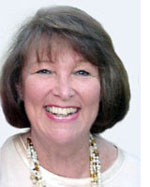In the Jewish home it is the mother who often stands alone, because her children frequently see her as opinionated, pushy, stubborn, and embarrassing. As seen by those children who grow up to be comedians, however, those negative qualities make her hilariously funny and the butt of most of their jokes. Or else they’d have to shoot themselves.
Such a mother was Mildred Kirschenbaum, whose daughter Gayle grew up to be a filmmaker. In Gayle Kirschenbaum’s latest documentary, Look at Us Now, Mother! she explores her mother’s life in an earnest attempt to understand and forgive her for the years of harsh opinions and tactless criticism she was made to endure as a child.
Gayle was the last of four children born into a family that already had three boys. What’s more, her parents had been looking forward to a fourth boy—-they called him Gary throughout Mildred’s pregnancy—-and so they did not welcome her with the overwhelming indulgence that is often provided as a birthright to a Jewish “princess.” As a result, Gayle grew up feeling herself an outsider, wondering if she had been born into this family by mistake.
She was not particularly beautiful as a young girl. Her hair was long and bushy and stood out like isoceles triangles on each side of her head. Moreover, she needed a nose job, according to her mother, who badgered her about it from childhood on. (Mildred’s other persistent question was “Why aren’t you married yet?”)
Later, as Gayle grew into an attractive woman, Mildred was recorded offering her a compliment. “You look good,” she said. But she followed it up with the narcissistic put-down: “I look better.”
Gayle’s father, who appeared to be indifferent (or deaf) to all this, had morphed from an angry young man to an even angrier old man. But he and Mildred had apparently been happily in love when they were young, and they married just before he went off to war. (Despite all the wars that followed, World War II has forever been referred to as The War by all those who lived through it.) By their 50th wedding anniversary, however, they were quite visibly not a loving couple any more and their repressed animosity was palpable.
All this is demonstrated by a lifetime of intimate photographs and films, most of them recording happier and more playful times, like the familiar snippets in most family albums.
Eventually, in a mutual effort to better their relationship, Mildred and Gayle agreed to go into therapy together. Through most of it Mildred was in denial, avoiding confrontation by responding to the therapist’s questions with a blank-faced “I don’t remember.”
Gayle, however, eventually achieved her goal: she was able to forgive her mother and free herself from the pain of perceived rejection, and Mildred, in turn, reciprocated, and offered her only daughter a warm, committed friendship.
This story, in its telling, may sound like an unbearable nightmare, but Gayle’s sympathetic and generous nature makes of it an engrossing and funny tale, full of discovery, acceptance, reconciliation, and finally, love. And you don’t have to be Jewish to recognize and identify with it.
Look at Us Now, Mother! has had a successful run in film festivals around the world and will make its American debut in New York and Los Angeles early in April. Watch for it in San Diego shortly after that.
*
Citron is a freelance writer who specializes in coverage of the dramatic arts. She may be contacted via cynthia.citron@sdjewishworld.com Comments intended for publication in the space below must be accompanied by the letter writer’s first and last name and by his/ her city and state of residence (city and country for those outside the U.S.)
